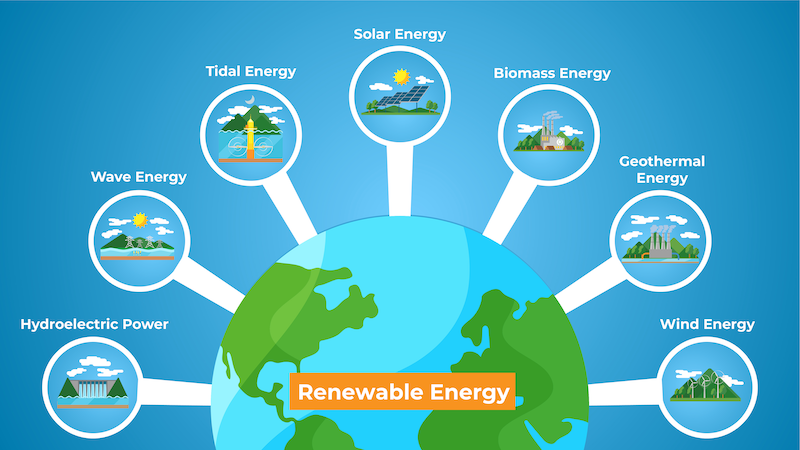
As the world faces escalating environmental challenges, the focus on sustainability has never been more critical. In 2024, the spotlight is on renewable materials that are redefining industries and contributing to a greener planet. These innovative materials offer sustainable alternatives to conventional resources, promising not only to reduce our environmental footprint but also to drive economic growth. This article delves into the top renewable materials making waves in 2024, highlighting their benefits, applications, and the transformative impact they are having on various sectors.
1. Bio-Based Plastics
Bio-based plastics have emerged as a revolutionary alternative to traditional petroleum-based plastics. Derived from renewable sources like corn starch, sugarcane, and algae, these materials are designed to reduce reliance on fossil fuels and minimize environmental impact. In 2024, advancements in bio-based plastics are making them more viable for widespread use.
- Applications: Bio-based plastics are being utilized in packaging, automotive components, and even medical devices. For instance, companies are producing biodegradable packaging materials that decompose naturally, reducing waste in landfills and oceans.
- Benefits: The use of bio-based plastics helps decrease greenhouse gas emissions and reduces plastic pollution. Additionally, they can often be composted or recycled, contributing to a circular economy.
2. Hemp-Based Products
Hemp is gaining traction as a versatile and eco-friendly material. Its cultivation requires minimal water and pesticides, making it an attractive option for sustainable development. In 2024, hemp-based products are making significant strides in various industries.
- Applications: Hemp fibers are used in textiles, construction materials, and even as a component in biodegradable composites. Hempcrete, for example, is an innovative construction material that offers excellent insulation properties and carbon sequestration benefits.
- Benefits: Hemp-based materials are known for their durability, low environmental impact, and ability to improve indoor air quality. They also support sustainable agricultural practices and contribute to reducing deforestation.
3. Mycelium-Based Materials
Mycelium, the root system of fungi, is emerging as a groundbreaking material with diverse applications. Its ability to grow rapidly and decompose organic matter makes it an ideal candidate for creating sustainable products.
- Applications: Mycelium is being used to develop biodegradable packaging, furniture, and even building materials. Researchers are exploring its potential in creating durable and eco-friendly alternatives to conventional products.
- Benefits: Mycelium-based materials are compostable and offer a low carbon footprint. They also utilize agricultural waste as a substrate, contributing to waste reduction and resource efficiency.
4. Recycled Ocean Plastics
Addressing ocean plastic pollution is a major concern, and recycled ocean plastics are providing a practical solution. These materials are sourced from discarded plastics collected from marine environments and repurposed into new products.
- Applications: Recycled ocean plastics are being used in various products, including apparel, footwear, and even construction materials. Brands are incorporating these materials into their supply chains to promote sustainability and raise awareness about marine conservation.
- Benefits: By transforming ocean plastics into valuable products, this approach helps reduce marine pollution and supports the circular economy. It also raises consumer awareness about the importance of reducing plastic waste.
5. Algae-Based Materials
Algae, a rapidly growing and highly versatile organism, is becoming a key player in the realm of renewable materials. Algae-based products are gaining popularity due to their sustainability and potential to replace less eco-friendly resources.
- Applications: Algae-based materials are used in various industries, including food packaging, textiles, and biofuels. For example, algae-derived bioplastics are being developed as an alternative to traditional plastics.
- Benefits: Algae-based materials are biodegradable and offer a low environmental impact. They also have the potential to reduce dependency on fossil fuels and contribute to more sustainable agricultural practices.
6. Bamboo Products
Bamboo is one of the fastest-growing plants on Earth, making it an excellent candidate for sustainable material production. Its rapid growth and renewability contribute to its appeal as an eco-friendly resource.
- Applications: Bamboo is used in a wide range of products, including furniture, flooring, and kitchenware. Its natural strength and versatility make it a popular choice for various applications.
- Benefits: Bamboo products are biodegradable and require minimal processing compared to traditional materials. They also help reduce deforestation and promote sustainable land management practices.
7. Recycled Paper Products
Recycling paper has long been a standard practice, but in 2024, the focus is on advancing the technology and processes involved. Recycled paper products are gaining renewed attention for their role in reducing waste and conserving resources.
- Applications: Recycled paper is used in packaging, stationery, and construction materials. Innovations in recycling technology are making it possible to produce high-quality paper products from recycled fibers.
- Benefits: Using recycled paper reduces the demand for virgin wood pulp and minimizes waste sent to landfills. It also conserves natural resources and energy, contributing to a more sustainable paper industry.
8. Cottonized Hemp
Cottonized hemp combines the benefits of hemp with the softness and versatility of cotton. This hybrid material is making waves in the textile industry for its sustainability and performance.
- Applications: Cottonized hemp is used in clothing, upholstery, and textiles. Its blend of durability and comfort makes it a popular choice for various applications.
- Benefits: Cottonized hemp offers the environmental advantages of hemp with the familiar feel of cotton. It supports sustainable agriculture and reduces the reliance on conventional cotton, which often involves resource-intensive practices.
9. Sustainable Rubber Alternatives
The search for sustainable rubber alternatives has led to the development of materials derived from renewable sources. These alternatives are poised to replace traditional synthetic rubber and contribute to a greener future.
- Applications: Sustainable rubber alternatives are used in tires, footwear, and various industrial products. Innovations in this area are focused on enhancing performance while minimizing environmental impact.
- Benefits: These alternatives reduce dependence on petrochemical resources and offer a more sustainable option for rubber products. They also contribute to reducing greenhouse gas emissions and supporting circular economy practices.
10. Wood-Based Biocomposites
Wood-based biocomposites combine natural wood fibers with renewable resins to create materials with enhanced properties. These composites are making significant strides in the construction and automotive industries.
- Applications: Wood-based biocomposites are used in building materials, automotive components, and furniture. Their strength and versatility make them a valuable alternative to conventional materials.
- Benefits: Wood-based biocomposites offer improved sustainability by utilizing renewable wood fibers and reducing the need for synthetic materials. They also contribute to waste reduction and support sustainable forestry practices.
Conclusion
In 2024, the adoption of renewable materials is reshaping industries and driving us toward a more sustainable future. From bio-based plastics to hemp-based products and mycelium-based materials, these innovations are not only addressing environmental challenges but also creating new opportunities for growth and development. By embracing these top renewable materials, businesses and consumers alike can contribute to a greener planet and foster a more sustainable economy.

